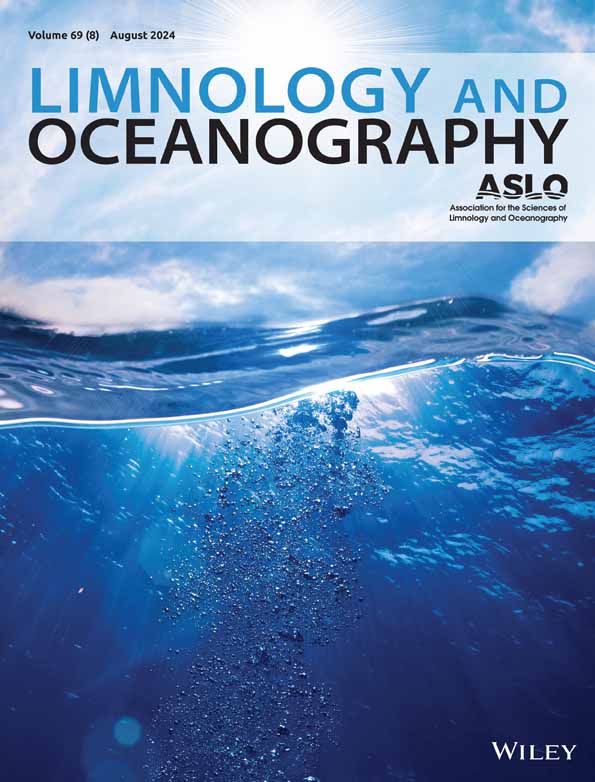Effects of oligotrophication on fish growth: Insights from a mesocosm experiment
IF 3.7
1区 地球科学
Q1 LIMNOLOGY
引用次数: 0
Abstract
Human activities can frequently affect aquatic ecosystems in irreversible ways, with flow regulation and water quality being major concerns. Dams can promote the retention of sediments and nutrients, increase water transparency, and reduce primary productivity, all of which characterize the oligotrophication process. Although the beneficial effects of oligotrophication in eutrophic systems are well documented, the oligotrophication process caused by river impoundment can negatively affect aquatic communities in non‐eutrophic systems. Our study aimed to assess the effects of oligotrophication on the specific growth rate of small‐bodied fish. We hypothesized that the fish‐specific growth rate would decrease under an oligotrophic scenario, due to bottom‐up processes. We performed a full‐factorial experiment with nine treatments, using three levels of inorganic turbidity crossed by three levels of nutrients, in mesocosms during 24 d. In each tank, we added plankton and 30 individuals of少营养化对鱼类生长的影响:来自中生态实验的见解
人类活动经常以不可逆转的方式影响水生生态系统,流量调节和水质是主要问题。大坝可以促进沉积物和营养物质的滞留,增加水的透明度,降低初级生产力,这些都是低营养化过程的特征。虽然富营养化在富营养化系统中的有益作用已被充分证明,但河流蓄水引起的富营养化过程可能对非富营养化系统中的水生群落产生负面影响。本研究旨在评估贫营养化对小体鱼类特定生长率的影响。我们假设在低营养情景下,由于自下而上的过程,鱼类特定的生长率会下降。我们进行了全因子试验,在24 d的时间里,在中生态系统中使用三种不同水平的无机浑浊度和三种不同水平的营养物,共9个处理。在每个水箱中,我们添加了浮游生物和30只森林门虎鱼,这是一种杂食性的鱼类。在试验开始和结束时对鱼进行称重,以计算特定生长率。我们观察到无机浊度和营养物对比生长有显著的相互作用。在中浊度和高营养水平(T3N3)和高浊度和高营养水平(T3N3)处理中,生长率下降幅度最小。我们的研究结果表明,无机浊度和营养物质的变化与河流大坝引起的少营养化相一致,将对鱼类生长产生负面影响,这可能对渔业生产产生严重影响,并对水生生态系统产生不可逆转的影响。
本文章由计算机程序翻译,如有差异,请以英文原文为准。
求助全文
约1分钟内获得全文
求助全文
来源期刊

Limnology and Oceanography
地学-海洋学
CiteScore
8.80
自引率
6.70%
发文量
254
审稿时长
3 months
期刊介绍:
Limnology and Oceanography (L&O; print ISSN 0024-3590, online ISSN 1939-5590) publishes original articles, including scholarly reviews, about all aspects of limnology and oceanography. The journal''s unifying theme is the understanding of aquatic systems. Submissions are judged on the originality of their data, interpretations, and ideas, and on the degree to which they can be generalized beyond the particular aquatic system examined. Laboratory and modeling studies must demonstrate relevance to field environments; typically this means that they are bolstered by substantial "real-world" data. Few purely theoretical or purely empirical papers are accepted for review.
 求助内容:
求助内容: 应助结果提醒方式:
应助结果提醒方式:


